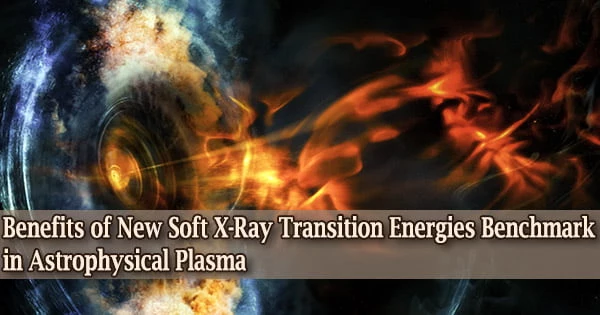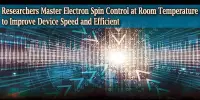In order to understand some of the Universe’s most potent and enigmatic objects and events, such as stellar coronae and winds, cataclysmic variables, X-ray binaries containing neutron stars and black holes, supernova remnants, or outflows in active galactic nuclei, analysis of astrophysical plasmas is essential.
If this research is successful, future astrophysical X-ray observatories will make it possible for researchers to use methods that aren’t now available to X-ray astronomy. Accurate transition energy knowledge is essential for the proper interpretation of high-resolution X-ray spectra.
A plasma (an ionized gas) found in astronomy whose physical characteristics are investigated by the field of astrophysics is referred to as an astrophysical plasma. It is believed that plasma, a state of matter in which atoms and molecules are so hot that they have ionized by rupturing into their component parts, negatively charged electrons and positively charged ions, makes up the great bulk of the volume of the cosmos.
A recently introduced experimental setup at the BESSY II synchrotron facility is used in a new paper from J. Stierhof of the Dr. Karl Remeis-Observatory and Erlangen Centre for Astroparticle Physics of Friedrich-Alexander-Universt Erlangen-Nürnberg, Bamberg, Germany, and coauthors to provide precise calibration references in the soft X-ray regime of neon, carbon dioxide, and sulfur hexafluoride gases.
Our proposed setup provides an absolute calibration for the X-ray beam, but we found that the total uncertainty is dominated by relative changes of the beam. Providing an additional setup to measure these relative changes will bring us closer to the resolution limit of 10 meV.
J. Stierho
“In many research fields involving X-rays or any wavelength of light, insights are obtained by comparing measurements of emission or absorption line wavelengths with known values of transitions in various elements. A shift of the observed wavelength with respect to the known one can occur because of the velocity of the emitter or absorber,” says Stierhof.
“Our work demonstrates a setup to measure transition energies of gases simultaneous with known transitions in highly charged ions having only two remaining electrons that are precisely known from theoretical calculations.”
Every single plasma in known astrophysics is magnetic. They are electrically neutral generally because they have an equal quantity of electrons and ions. Additionally, any charge imbalances are easily corrected in plasmas due to their great conductivity.
A gas photoionization cell containing the target atoms or molecules is where the monochromatic X-rays from the synchrotron beamline enter after passing through an electron beam ion trap (EBIT), where they interact with the low-density plasma created and trapped inside the EBIT.
The monochromator energy scale in the experiment is absolutely calibrated using fluorescence emission from the ions in the EBIT.
Results for the energy transition in the carbon dioxide k-shell revealed in the research are in good agreement with earlier findings. Results for the transitions exhibited by sulfur hexafluoride revealed that the claimed uncertainty of earlier experiments was overstated by roughly 0.5 eV.
The research team comes to the conclusion that, in theory, the statistical uncertainty permits calibrations in the required range of 1 to 10 meV, with systematic contributions currently limiting the uncertainty to a range of approximately 40 to 100 meV.
“Our proposed setup provides an absolute calibration for the X-ray beam, but we found that the total uncertainty is dominated by relative changes of the beam,” Stierhof concluded. “Providing an additional setup to measure these relative changes will bring us closer to the resolution limit of 10 meV.”
















